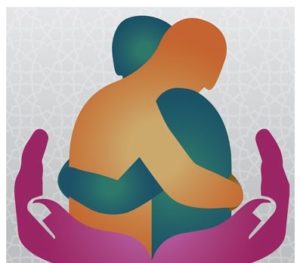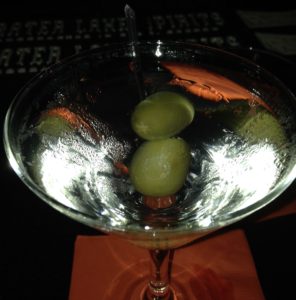
“Ah, look at all the lonely people.” These days loneliness is everywhere, and that has important implications for qualitative research.
Not long ago I wrote a post on scarcity, and what a scarcity mindset does to perceptions and decision making. Often, when we think about scarce resources, we tend to restrict our thinking to things like time and money. But there are a lot of resources for which scarcity can affect our lives, and a particularly resonant one right now is social scarcity—loneliness.
We’re all spending a lot more time at home these days, and having far less in-person interaction with friends, family and colleagues than we used to. Loneliness has been a growing problem around the world for a number of years, but it has become particularly acute in recent months. Recent studies – which are cited at the end of this blog post – have shown a significant uptick in feelings of loneliness since the onset of social distancing.
At the risk of stating the obvious, this is not something we should ignore. Socialization correlates closely to life expectancy—it’s one of the reasons women outlive men in most of the world. It’s also has clear connections to overall health, mental health, and to factors specifically linked to immunity and recovery from disease. One statistic I’ve seen is that chronic loneliness is as debilitating as smoking 15 cigarettes a day. Yikes.
So, clearly, loneliness is something of which we need to be aware for our own well-being. But it’s also particularly important to keep loneliness in mind right now when conducting qualitative research. I, and many of my fellow qualitative researchers, have noticed recently that our online research respondents are pretty open about feeling lonely—in fact, while it used to be that people felt that talking about their loneliness was an admission of failure, as they were admitting to not having a social network to support them, COVID has changed all that; loneliness has become socially acceptable.
This increase in loneliness seems to be leading research participants to have more need than usual to bond with researchers and their fellow participants. This isn’t necessarily a bad thing, as it can lead to participants who are more engaged, and often quite grateful to be participating in the research. One reason people are participating in your research is simply to connect with others. It’s important to give them an outlet for this desire— fighting it is only going to get everybody frustrated. However, this also needs to be managed, as it is possible for lonely participants’ need to connect to distract you from your research objectives.
That being the case, here are a few approaches that I have been employing recently during online focus groups and interviews to address loneliness.
Say ‘hi!’ Before the group starts, take the opportunity to say hello to the people in the virtual waiting room. You can give them a bit of information about how the research is going to proceed, show them the cool features of the online research platform (markup tools are particularly fun to play with), and get to know them a bit. You can even introduce them to the tech support people and maybe even the client, if appropriate. This is time well spent.
Create community. As a general rule, the more you can create a sense of fellowship in the course of conducting research, the better your research is going to be. When you’re dealing with pervasive loneliness, this becomes even more important. For an opening exercise, get people to share details about their lives, and then to look for similarities. When people find commonalities with others, they feel more connected and less alone. I like to ask somebody to start the introductions by sharing two or three things about themselves. They can be anything—things they like to do, things that make them unique, things that they’re passionate about, etc. Then, ask the next person to share three things, with at least one that relates to at least one thing the previous person said. There you go—ready made connections. Bear in mind that this is a bit more time consuming that a typical intro exercise, but is worth the extra time.
Provide positive feedback. I’ve noticed recently that some participants, because they’re consciously aware of how lonely they feel, worry that they won’t do a good job in the group or interview. So, I make sure participants know they’re doing great. I compliment them on being particularly thoughtful, on being especially candid, on disagreeing with somebody agreeably, on answering a complicated question very artfully, etc. This is always a good research practice, but it’s particularly valuable now. Remember that words matter. The things you say to the participants in your group have a profound effect on how they feel, and how they participate in your research.
Have some chitchat. Don’t underestimate the value of a little bit of small talk, and build in some time for it. For the most recent online focus group studies I’ve done, although the planned discussion was 90 minutes, I scheduled a two-hour group (and paid the participants accordingly). Once the group started, I let the participants know that we weren’t quite ready to start, so we’d begin in about fifteen minutes, but that we would still end at the scheduled time. So, we had a free fifteen minutes just to chat about anything we wanted. These have been fun discussions: people have talked about what they’re watching on Netflix these days or a new recipe they created, have shared pictures of their kids and pets, and have used the screensharing feature to share fun YouTube videos. By the time we started the group, everybody was in a good frame of mind and we had a great discussion.
The guiding principle here is to be kind, compassionate and empathetic. Loneliness is a very human feeling. It needn’t compromise your research if you have a plan to deal with it.
Note: Below are links to some other good resources about loneliness.
https://socialself.com/loneliness-corona/
https://www.valuepenguin.com/coronavirus-loneliness-survey?utm_source=STAT+Newsletters&utm_campaign=f3e6bb82c2-MR_COPY_01&utm_medium=email&utm_term=0_8cab1d7961-f3e6bb82c2-152047705
https://www.hrsa.gov/enews/past-issues/2019/january-17/loneliness-epidemic





